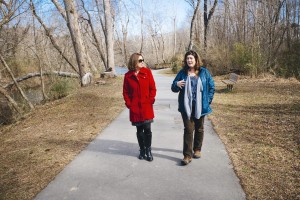 For several years now, funders have found themselves amid a rising tide of metrics and data. We look to numbers to tell us if we’ve “moved the needle,” “closed the gap” or otherwise made progress. We disaggregate data to better understand the populations we want to serve, and to determine where funding opportunities might lie.
For several years now, funders have found themselves amid a rising tide of metrics and data. We look to numbers to tell us if we’ve “moved the needle,” “closed the gap” or otherwise made progress. We disaggregate data to better understand the populations we want to serve, and to determine where funding opportunities might lie.
Don’t get me wrong, I believe that data is valuable in terms of gauging impact and return on investment. It definitely has it place in a grantmaker’s toolbox. But there are many facts of the human condition that defy a numeric assessment. There are feelings and changes in perception that are all but impossible for data to quantify. These are emotions like hope, caring, courage – things we can look at after the fact and possibly quantify through surveys (“On a scale of 1-10, how do you feel about your neighbor as a positive influence in your community and an asset to your life?”).
You can’t put a metric on happiness. You can’t really quantify how much someone loves others, or hates, or the depths to which passion for a cause really goes. You learn these things by learning about the person as an individual, from talking with them, observing them, and hearing what they have to say. The best way to truly understand what a person, or a group, or a community is feeling and going through is by hearing their stories.
The Putnam team was lucky enough these past few months to hear many stories from remarkable (yet very ordinary according to the data) people in four North Carolina counties. We spoke with dozens of people as part of our work to help demonstrate the progress the Kate B. Reynolds Charitable Trust is making through its Healthy Places NC initiative. Healthy Places NC aims to improve health outcomes in four of the state’s poorest rural counties.
We spoke one-on-one with health providers, pastors, teachers, elected officials, and government workers about what they’re seeing in their communities and how they feel about new efforts to work together to improve health. We also spoke with several “end users” of the Healthy Places work – those struggling to fight diabetes, gain financial stability, and access fresh foods. What was most remarkable were the stories of life-changing obstacles overcome, grassroots leadership taking hold, and hope springing forth from places many people might write off as hopeless. We heard stories and perspectives from people who well understand the challenges of brining their communities together, and the incredible opportunity they have to do so.
The people we interviewed deeply understood that community change comes from within. As one told us, “health is about people, not programs.” They shared with us many stories about how and why and when they decided that they wanted to see change for the better. In many cases, seeing the data about their counties was an ah-ha moment, but it wasn’t the motivator. Across the board, these people are working for change because they know the stories of their neighbors. They want to help because they know their stories are all intertwined.
It’s not like data won’t play a big role in gauging the impact of Healthy Places. The initiative will last for at least 10 years, and the Trust will use volumes of data to watch for shifts in changes in rates of chronic illnesses and other key indicators. And they are using evidence-based programs like Nurse Family Partnership and a YMCA diabetes curriculum to influence some positive changes in that data.
But those metrics alone will miss the real story of what’s going on in these communities. What change really looks like, what it takes, and the predictor of whether it will last, come from honest conversations and real-life stories.
Our presentation of the stories we heard will be available fairly soon, but you can read a small portion now on the Trust’s website. It doesn’t quantify a community’s change, but it does demonstrate a powerful impact. This is why telling stories is always more powerful than just sharing numbers. As any fundraiser will tell you, people may evaluate with their heads, but they give with their hearts.
Kris Putnam-Walkerly, MSW is a philanthropy expert, speaker and advisor.For more tips and tools about communication, read the 4 Dimensions of a Communications Plan and article The Strategy Behind the Story: Putting the Pieces in Place for an Effective Communications Plan, or you can listen to a podcast with Kris on how to Prioritize and Implement a Communications Plan Immediately.
© 2015 Kris Putnam-Walkerly. All rights reserved. Permission granted to excerpt or reprint with attribution.






